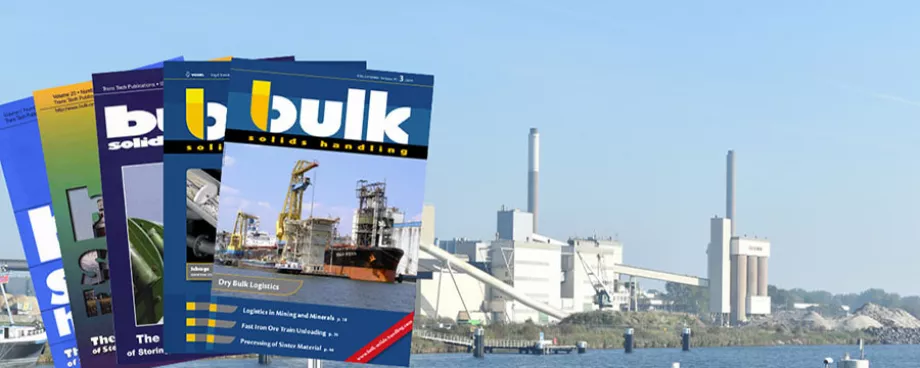Because of the number of different grades of coal that will be handled it was essential that maximum flexibility of equipment, and therefore flexibility of stockpile management be incorporated. The first phase will allow the stockpiling of 1.5 million tonnes of coal, will have an annual throughput of 15 million tonnes, and is scheduled for completion by mid 1983.
Coal will be received from unit trains fitted with bottom dump wagons. The rail loop has been designed to allow the storage of 2 full trains on the entry side of the bottom dump hopper, and 2 empty trains on the outgoing side whilst still providing space for the train to unload. Recovery of the coal from the bottom dump pit will be by a batch of 6 electromagnetic vibrating. feeders at the rate of 3600 t/h.
When duplication of the first stage is completed the train unloading rate will be doubled to achieve a rate of 7200 t/h thus enabling a unit train to be unloaded in approximately 55 minutes.
The materials handling system allows the coal from trains to be stockpiled or pass directly to the shiploading system. The conveyors onshore are of fabric belt construction to minimise the risk of longitudinal tearing, are 1600 mm wide and run at the rate of 5 m/sec.
Tramp iron magnets will be installed to protect the conveyor belting and chutes and hoppers will be fitted with fused alumina and cast basalt tiles for impact and wear resistance.
Drives to conveyors, in general, consist of an electric motor, traction fluid coupling, bevel helical gearbox and output coupling fitted to each side of the drive pulley. Where possible standardisation of drive components, belting, conveyor pulleys etc. has been utilised to minimise spares holdings.
Special attention has been given to the specified requirements of the gear reducers to ensure reliable operation for the life of the plant.
The mobile machinery to be incorporated in Stage I of port facilities comprise one (1) Bucket Wheel Stacker/Reclaimer, two (2) Bucket Wheel Reclaimers and one (1) Stacker.
■







